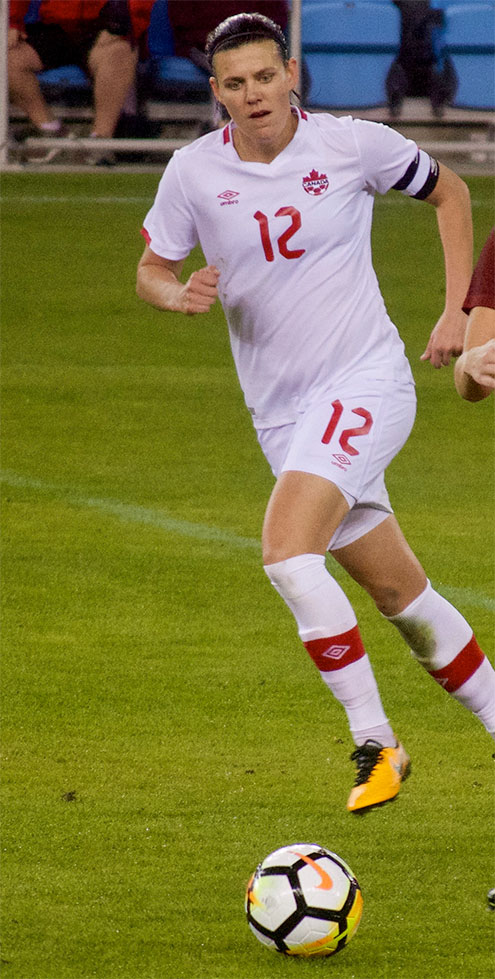What does it take to secure the title in international soccer of the all-time leading goal scorer?
For the complete answer, you'd need to ask BC-born Christine Sinclair, who boasts a record of 190 goals in 322 appearances over 23 years—dozens more than male superstars like Lionel Messi and Cristiano Ronaldo.
However, if you're seeking the scientific perspective, you can turn to us.
In honour of Sinclair’s final international game at BC Place Stadium (temporarily renamed Christine Sinclair Place for this historic night), we're delving into the extraordinary capabilities of the human body and how its various systems collaborate to achieve remarkable feats.

In Christine's career and the scientific intricacies of muscle dynamics, there’s a shared narrative of resilience, dedication, and the pursuit of excellence!
Approximately 650 muscles make up about half of your body weight. Three types of muscle tissue—visceral (found inside organs like your stomach), cardiac (heart), and skeletal—contribute to the body's athletic prowess.
Skeletal muscles, the powerhouse behind physical actions, are the only voluntary muscle tissue in the human body—controlled consciously. Every consciously performed physical action, such as pursuing a soccer ball, relies on this muscle type.
(Photo by Noah Salzman)
The skeletal muscle's primary function is to contract and move body parts closer to the bone to which the muscle is attached. Skeletal muscle fibres contract and relax at different speeds, varying in reactions used to generate adenosine triphosphate (the primary source of energy for biological functions) and in how quickly they fatigue.
- Type 1 (slow twitch or slow oxidative): Smallest in diameter and the least powerful, these fibres contract slowly but sustain energy release gradually, suited for activities like marathons and endurance sports.
- Type 2a (fast twitch or fast oxidative-glycolytic): Intermediate in diameter, these fibres can generate considerable adenosine triphosphate using oxygen, providing moderate resistance to fatigue. They contribute to activities like walking and sprinting.
- Type 2b (fast twitch or fast glycolytic): Largest in diameter, these fibres generate powerful contractions rapidly. Suited for intense anaerobic movements of short duration, such as weightlifting or throwing a ball, they fatigue quickly.
During a 90-minute soccer game, elite players cover around 10km at an average intensity near the anaerobic threshold (80–90% of maximal heart rate). Athletes focus on enhancing aerobic endurance, strength, and strength derivatives of speed and power. Understanding this, we can speculate that a soccer player's muscle composition might feature a higher proportion of Type 1 and 2a muscles, potentially less of Type 2b.
So, if your goal is to emulate Christine Sinclair's success, be prepared to prioritize your aerobic training. Then one day you too could lay claim to an Olympic gold medal, play in six FIFA World Cups, and retire to the cheers of 41,000 screaming fans.
Celebrate with us.
Check out our dome lights on December 5 as we light up in honour of Christine Sinclair's historic career.
